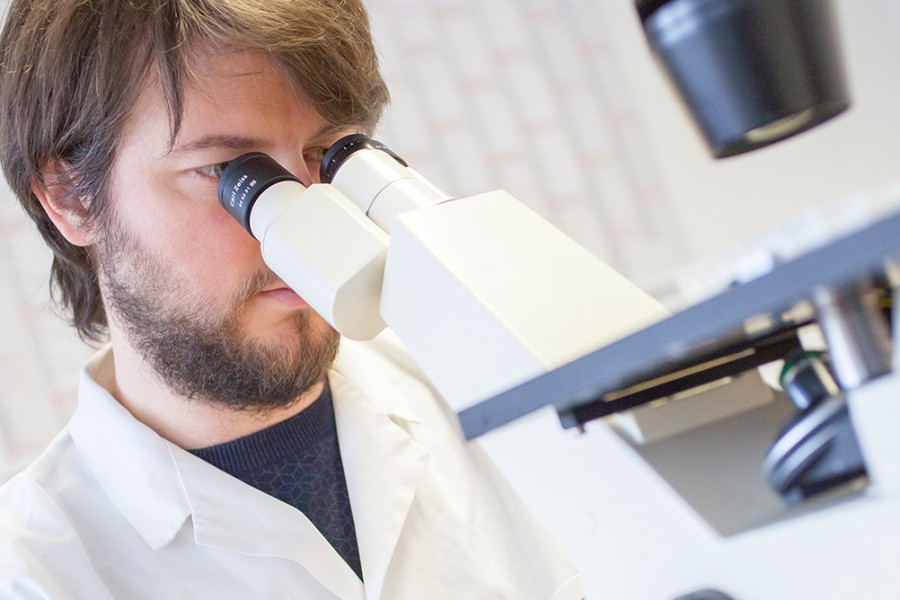QUALITY
FOCUS ON THE QUALITY
Our claim is to produce organic plant protection products of the highest quality. To ensure this quality of our nematode products, continuous controls are carried out before and during the manufacturing process. Since our products are individual, living organisms, a one hundred percent survival rate of all nematodes cannot be completely guaranteed. Therefore, our products always contain both live and dead nematodes. However, this has no negative impact on the effectiveness of our products.
QUALITY ASSURANCE MEASURES
- Microscopic purity tests at various stages.
- Monitoring of the process parameters of the fermentation process
- Monitoring of the development stages of the nematodes
- Control of microbial contamination by smear and PCR
- Control of the yield (DL/ml)
- Virulence test of the final product

FREQUENTLY ASKED QUESTIONS
The more energy the dauer larvae conserve, the longer they survive.
Our formulation is designed to immobilise the nematodes in the sales packaging so that they consume as little energy as possible. In general, our product is designed so that the combination of number and effectiveness of the nematodes achieves a certain effect on a given infested area.
The agility of the nematodes in the package is not an indication of effectiveness in the field. The efficacy of the product is only influenced to a limited extent by the number of nematodes.
Slight deviations in the number of nematodes and product variations are therefore of methodological origin or stem from natural variations and do not affect efficacy.
Entomopathogenic (insect-killing) nematodes of the genera Steinernema and Heterorhabditis are commonly used to control insect pests. A specialised juvenile stage called the "infective juvenile stage" or "dauer larvae stage" is the stage produced and sold as a biocontrol product.
It is the only free-living stage of these nematodes. All other stages live inside the insect. The function of the infective juvenile is therefore to colonise an insect host as a reproduction site or, if no host can be found, to survive and endure the harsh environmental conditions ("Dauer" is the German translation of "aushalten").
The infectious juvenile does not consume food and lives on abundant energy reserves stored in its body cells in the form of lipid droplets. In its intestine it harbours symbiotic bacteria that are released as soon as the nematode has successfully invaded the haemocoel of an insect. The nematode's symbiotic bacteria overcome the insect's immune system and the insect dies within a few days of infection. The interaction of the bacterial-nematode unit with the insect's immune system is complex and varies depending on the nematode/insect combination.
Our products always contain live, but also dead infectious juveniles (IJs) of nematodes. We do not determine the number or proportion of dead nematodes, as they do not have any influence on the efficacy of the product. Therefore, only live nematodes are counted in the quantification and reported with a methodological error of approx. 10%.
Biocontrol products based on entomopathogenic nematodes can be stored at room temperature for a few days without their quality being affected. However, the survivability of the nematodes decreases drastically with increasing storage and transport temperature. At 25 °C, only 10 % loss is recorded within three days for the first time, whereas this loss increases considerably at temperatures above 25 °C and more than 10 % nematode losses are recorded within a few hours after exposure.
Although the ability of infectious juveniles to kill Tenebrio molitor is not affected at temperatures above room temperature, the quality of the product and the storage time are reduced due to possible microbial growth in the moist product. Therefore, it is recommended to store our products at temperatures between 4 and 12 °C, which will maintain the quality of the product for at least six weeks.
Nematodes harbour symbiotic bacteria in their gut that are released once the nematode has successfully invaded an insect's body. As the insect's immune system eliminates contaminating organisms that enter with the nematodes, the symbiotic bacteria are released in a non-competing environment. They overcome the insect's immune system, supported in part by the nematode's excretions.
In most insects, the nematode is not recognised as foreign. In others, the immune response is overwhelmed by the number of nematodes and the proliferation of bacteria. The insect dies within a few days of infection and the nematodes, which feed on the bacteria, multiply over one or more generations. Depending on the size of the host, thousands to hundreds of thousands of infective juveniles leave the carcass 1-3 weeks after infection.